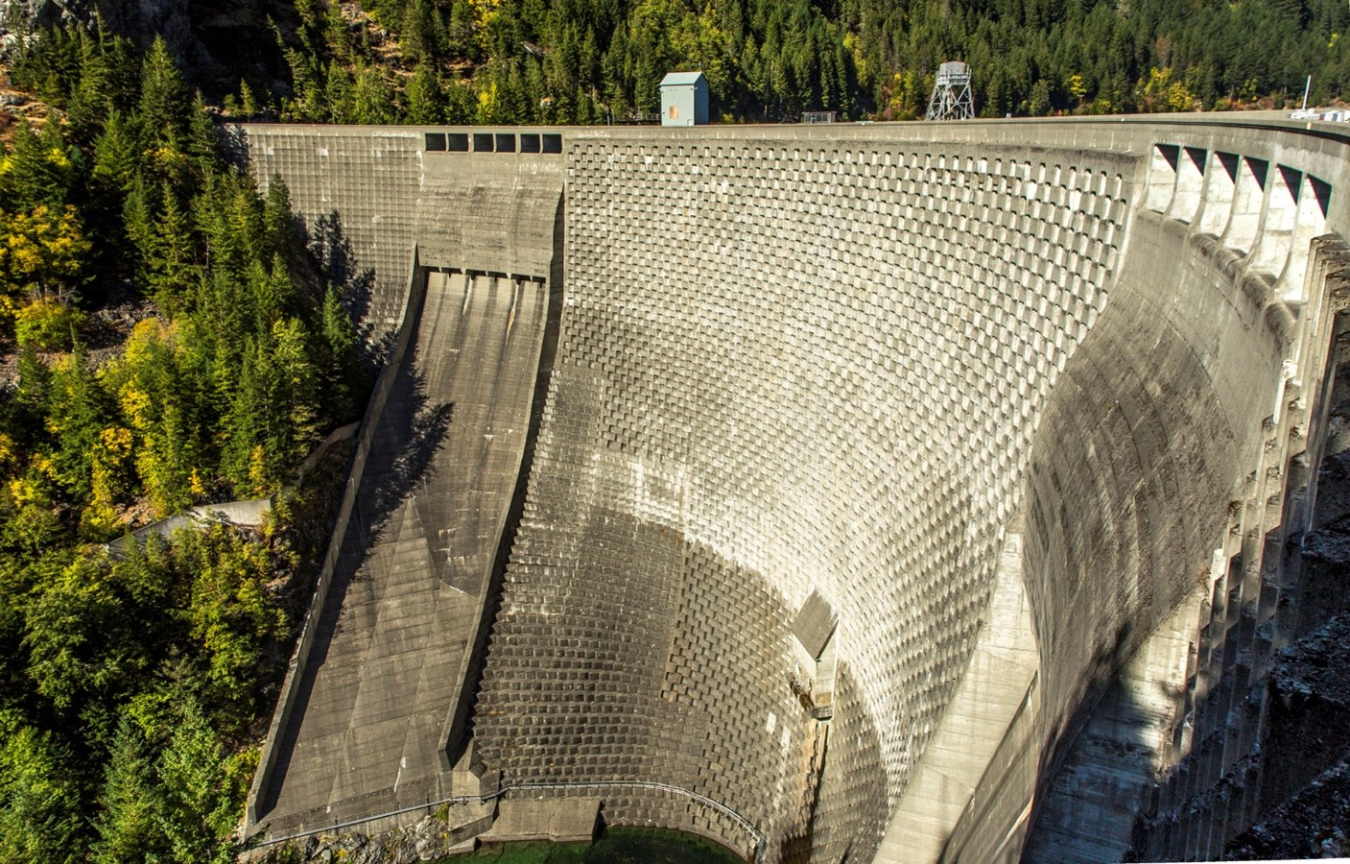Permitting and federal authorization processes can increase the costs, risks, and timelines of licensing (or relicensing) hydropower projects. Now, a new report examines what factors affect this process and how.
Water Power Technologies Office
October 21, 2021
Permitting and federal authorization processes can increase the costs, risks, and timelines of licensing (or relicensing) hydropower projects, like Washington’s Ross Lake Dam (pictured here). Now, a new report examines what factors affect this process and how. Photo by Pablo McLoud/U.S. Department of Energy
Hydropower is one of the oldest, most affordable energy sources, and accounts for 37% of the United States’ renewable energy generation. But hydropower developers must go through an extensive permitting and regulatory process to license or relicense new or ongoing projects. And while this process protects local water quality, wildlife species and habitats, cultural resources, and recreation, it can also increase the cost, risk, and timeline of licensing hydroelectric plants.
Now, a new report, “An Examination of the Hydropower Licensing and Federal Authorization Process,” examines which factors have the greatest impact on the hydropower licensing process. The report provides both quantitative and qualitative analyses, shares perspectives from both hydropower developers and regulators, addresses previous studies on hydropower licensing timelines and costs, and compares the U.S. hydropower licensing process to that of other top hydropower-producing countries.
While this report does not propose any specific recommendations to alter the current hydropower process, the findings could help decision makers identify opportunities for reform and modernization. Policymakers and regulators—including the Federal Energy Regulatory Commission, federal land management agencies, federal and state resource agencies, and American Indian tribes—can also use the analysis to engage in informed discussions with hydropower industry stakeholders like utility managers, project developers, consultants, trade associations, and nongovernmental organizations.
The report’s key findings are:
- Greater environmental complexity can lead to longer licensing timelines, especially for relicensing. Evaluating how to mitigate the impacts of a hydropower project on cultural or natural resources, endangered wildlife species, critical habitats, or recreational opportunities can prolong the licensing process. It takes an average of 5 years to obtain an original license, while relicensing takes an average of 7.6 years. Drivers that increase the time to license include compliance with the Endangered Species Act and Clean Water Act as well as turnover and limited staffing at state and federal agencies.
- Licensing costs often disproportionately impact new and/or smaller projects. Smaller projects often have shorter licensing timelines but proportionally higher costs than larger projects, which can absorb costs through economies of scale. In addition, because existing projects seeking relicensing can continue to generate electricity and revenue throughout the process, their licensing costs are less burdensome than those of new projects.
- Disagreements in negotiations over environmental studies can prolong licensing timelines. Developers and regulators often disagree over whether existing environmental studies are adequate to address potential impacts on local ecosystems or if a fresh study, specific to the project site, is needed. If regulators determine a new study is necessary, developers must commission one, which can add both time and cost to the licensing process.
- Incomplete and/or inadequate information can result in longer licensing timelines and disagreements. A statistical analysis of over 100 FERC license proceedings showed that 17% of state water quality certifications took longer than 2 years (1 year is typical) and Endangered Species Act certifications took months to years longer due to incomplete data. These delays were caused, in part, because license applicants sometimes disagree on what information is essential.
- The Integrated Licensing Process has the shortest and least variable timeline. The Federal Energy Regulatory Commission offers three licensing processes. Because the Integrated Licensing Process holds developers and regulators to a strict timeline, it’s often more predictable than other processes and saves developers an average of about 1 year to license their projects.
- The hydropower permitting process differs between countries and with other national energy or water infrastructure processes. Compared to the other national energy and water infrastructure licensing processes assessed, the U.S. hydropower licensing process provides more opportunities for federal and state agencies to weigh in. In the United States, hydropower licensing requires participation of up to 11 federal and state agencies (depending on the plant’s location) and provides additional opportunities for tribal and public input; in other countries assessed, the process often involves about 5-6 agencies and requires fewer opportunities for external input.
- The U.S. hydropower licensing process can improve environmental coexistence with hydroelectric plants. This includes expanding fish passage across dams in a watershed, increasing protections for wildlife species of concern, or improving recreational facilities.
Read the full report and summary to learn more.

